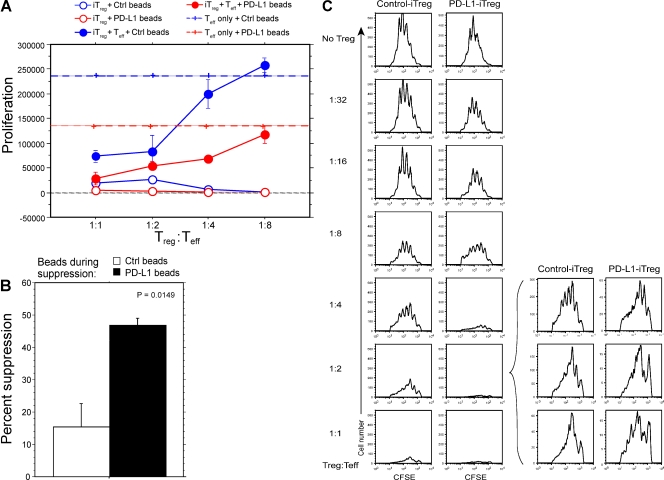Figure 4.
PD-L1 enhances the efficiency of iT reg cell–mediated suppression of T eff cells. (A) Foxp3.GFP+ iT reg cells were sorted and co-cultured with naive CD4+CD25−CD45.1+ T eff cells plus either PD-L1–Ig beads or control Ig beads (at various T reg/T eff cell ratios). 72 h later, cultures were pulsed with [3H]thymidine for 12–14 h. P < 0.0009 at a 1:4 ratio cultured with PD-L1 beads (comparing T eff + iT reg vs. T eff cells). Data represent the mean proliferation ± SD and are representative of at least four independent experiments. (B) Quantification of suppression at 1:4 ratio of T reg/T eff cells. P = 0.0149. Data represent the mean ± SD and are representative of at least four independent experiments. (C) PD-L1 iT reg cells suppress T eff cells more effectively than control iT reg cells. CD4+CD62L+ FoxP3.GFP− naive T cells were induced with PD-L1 or control beads in the presence of TGF-β. GFP+ iT reg cells were sorted and co-cultured at the indicated T reg/T eff cell ratios with CFSE-labeled CD4+CD25− Thy1.1 T eff cells and beads coated with anti-CD3 and anti-CD28 (in the absence of PD-L1) for 3 d. Graphs are representative of three experimental replicates and data are representative of three independent experiments.

